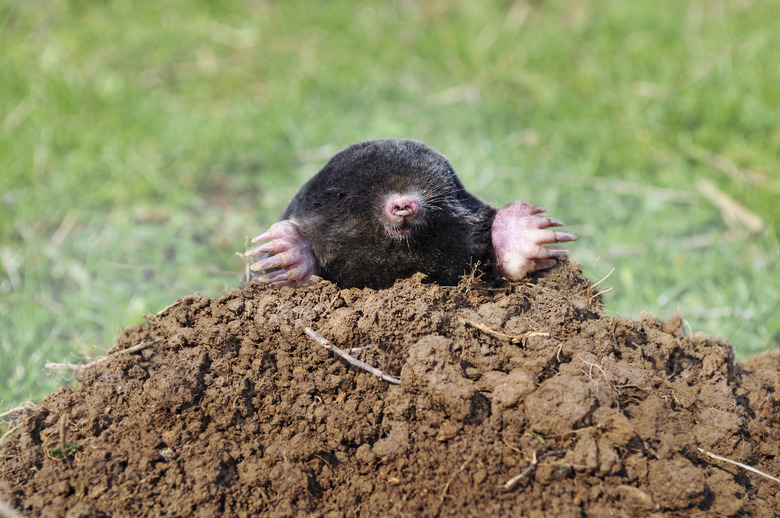What Animals Dig At Night?
If you've seen mysterious piles of soil in your yard, the likely explanation is a nocturnal animal. While an animal digging up plants at night may cause you a headache come morning, their habit actually services an important part of the ecosystem. Digging helps with decomposition, distributing plant seeds and keeping other animals at bay.
Types of Burrowing Animals
Types of Burrowing Animals
Nocturnal animals that dig holes include:
- armadillos
- badgers
- chipmunks
- foxes
- moles
- rats
- gophers
- woodchucks
- voles
- skunks
They dig for many reasons – to hide from predators, to build nests or shelters and to find food. Measuring the diameter of the hole will help you identify the type of burrowing animals in your yard.
Hole 3 Inches or Less
Hole 3 Inches or Less
If the diameter of the hole is 3 inches or less, it is most likely to have been created by a skunk, chipmunk or vole.
If the hole is shallow and surrounded by a ring of loose soil, it may be the work of a skunk. A skunk hole is about the size of a skunk nose, formed when the animal pushes its nose against the soil and digs for food with its front claws.
Typically, a hole made by a chipmunk is clean and about the size of a silver dollar. Chipmunk burrows can reach a depth of 3 feet underground and tend to appear directly underneath or next to cover, to give the creature protection from predators.
A vole builds small burrows with numerous entrance and exit holes, which are typically an inch or two wide and closely spaced.
Hole Greater Than 3 Inches
Hole Greater Than 3 Inches
If the diameter of the hole is greater than 3 inches, it is most likely to have been created by a larger animal, such as a badger, fox or woodchuck.
Badgers dig for food during the night, holes with creating large piles of dirt. A badger hole is usually more than 6 inches wide.
While foxes often take over a den dug by another animal, such as a woodchuck, they can also dig their own holes, which are typically about 4 inches wide. It's common to see animal and bird parts near the entrance of a fox hole.
Two holes, each around 8 inches wide, may indicate a woodchuck den. Typically, one hole has a dirt "porch" beside it. Unlike other habitual diggers, woodchucks are active during the day. You can expect to see flies around the entrance of an occupied woodchuck den.
Cite This Article
MLA
Gillespie, Claire. "What Animals Dig At Night?" sciencing.com, https://www.sciencing.com/animals-dig-night-8456348/. 15 August 2018.
APA
Gillespie, Claire. (2018, August 15). What Animals Dig At Night?. sciencing.com. Retrieved from https://www.sciencing.com/animals-dig-night-8456348/
Chicago
Gillespie, Claire. What Animals Dig At Night? last modified March 24, 2022. https://www.sciencing.com/animals-dig-night-8456348/
